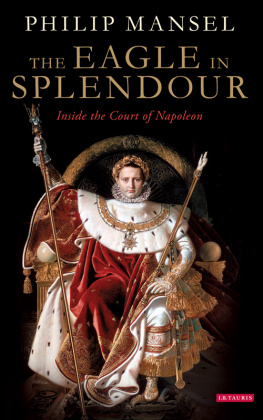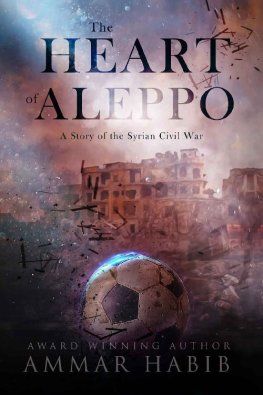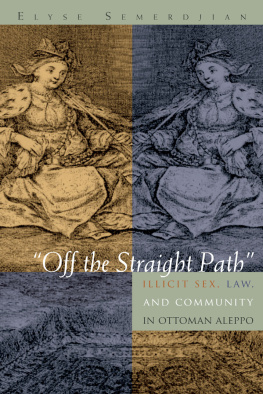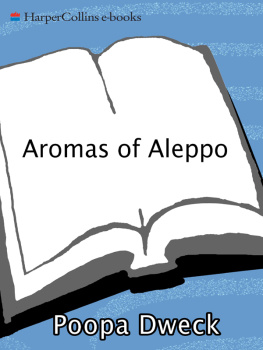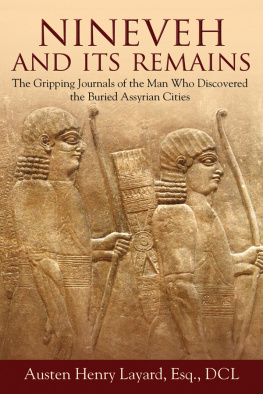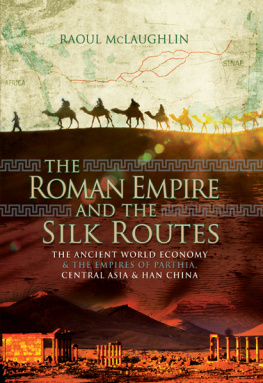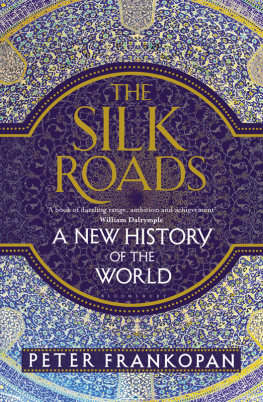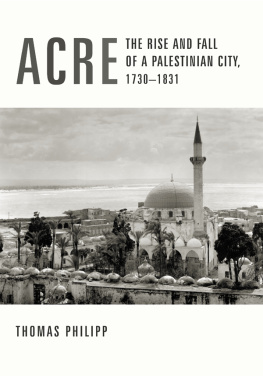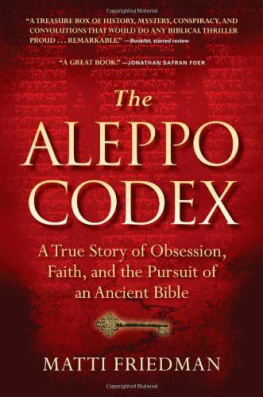Philip Mansel is a historian of France and the Middle East. He has lived in Paris, Beirut and Istanbul, and often visited Aleppo. In 2012 he won the London Library Life in Literature Award, and in 2013 became a Chevalier des Arts et des Lettres. His most recent publication is The Eagle in Splendour: Inside the Court of Napoleon (2015). Aleppo: The Rise and Fall of Syrias Great Merchant City is his third book on cosmopolitan cities of the Middle East, after Constantinople: City of the Worlds Desire (1995), on Istanbul, and Levant: Splendour and Catastrophe on the Mediterranean (2010), on Smyrna, Alexandria and Beirut.
Philip Mansel, our greatest authority on the civilisation of the Levant, has written a concise and elegant elegy to one of the oldest, grandest and most cosmopolitan cities of the region. As tragic as it is timely, this book succeeds magnificently in showing why we should mourn the fall of Aleppo.
William Dalrymple
A compelling portrait of one of the Middle Easts greatest cities, by one of the finest modern historians of the Levant. Mansels Aleppo reminds modern readers of the loss to world heritage inflicted by Syrias tragic civil war. An important and outstanding book.
Eugene Rogan, author of The Arabs and The Fall of the Ottomans
Aleppo
The Rise and Fall of Syrias Great Merchant City
Philip Mansel
Published in 2016 by
I.B.Tauris & Co. Ltd
London New York
www.ibtauris.com
Copyright 2016 Philip Mansel
The right of Philip Mansel to be identified as the author of this work has been asserted by the author in accordance with the Copyright, Designs and Patents Act 1988.
All rights reserved. Except for brief quotations in a review, this book, or any part thereof, may not be reproduced, stored in or introduced into a retrieval system, or transmitted, in any form or by any means, electronic, mechanical, photocopying, recording or otherwise, without the prior written permission of the publisher.
Every attempt has been made to gain permission for the use of the images in this book. Any omissions will be rectified in future editions.
References to websites were correct at the time of writing.
ISBN: 978 1 78453 461 5
eISBN: 978 0 85772 924 8
A full CIP record for this book is available from the British Library
A full CIP record is available from the Library of Congress
Library of Congress Catalog Card Number: available
Typeset by Out of House Publishing
To May Gazal Sikias and Mark Gazaleh
For the inhabitants of it, and the concourse of people, it is an epitome of the whole world.
Charles Robson, Newes from Aleppo, 18 May 1628
Illustrations
Maps
Aleppo and its region
Baedekers map of Aleppo, 1912 (private collection)
Plates
Panorama of Aleppo with the citadel in the background, c.1940 (Collection of May Gazal Sikias)
Andrea Soldi, Portrait of Henry Lannoy Hunter in Oriental Dress, Resting from Hunting, with a Manservant Holding Game,c.17336 (Tate Images)
A souk in Aleppo (from Jean Sauvaget, Alep. Essai sur le dveloppement dune grand ville syrienne, des origines au milieu du XIXe sicle, Paris, 1941)
Khan al-Wazir (from Sauvaget, Alep)
The iwan of the Beit Jumblatt (from Sauvaget, Alep)
Iwan and courtyard of the Beit Ghazaleh (from Sauvaget, Alep)
Salon Marcopoli, c.1900 (Collection of May Gazal Sikias)
A horse and its owner, outside Aleppo, c.1940 (Collection of May Gazal Sikias)
A camel caravan outside Aleppo, c.1940 (Collection of May Gazal Sikias)
Greek Catholic priests with members of the Ghazeleh family, c.1934 (Collection of May Gazal Sikias)
Rue Baron, British troops, c.1942 (Collection of May Gazal Sikias)
Amina al-Harriri with her son Ghassan in the family house near the Great Mosque, c.1939 (Collection of Zahed Tajeddin)
A costume ball at the Club dAlep, 1952, formerly a Ghazeleh house (Collection of May Gazal Sikias)
Fte-Dieu procession, 28 May 1964 (Collection of May Gazal Sikas)
Acknowledgements
I am deeply grateful for information and comments to Sonia Anderson, Georges and Myriam Antaki, Edward Chaney, Peter Clark, Hussein el-Mudarris, Caroline Finkel, Julia Gonnella, Cecil Hourani, Basil Tallal Kudsi, Faisal Kudsi, Erol Makzume, Simon Mills, Nabih Moukayed, Aouni Abdul Rahim, Alan Rush, Olivier Salmon and Zahed Tajeddin. I owe a particular debt of gratitude to May Gazal Sikias and Mark Gazaleh. They not only found many illustrations for this book, and provided invaluable information and comments, they also commissioned an early version of the text in 2011 as they were researching the history of the family house Beit Ghazaleh in Aleppo, in preparation for its planned opening as a Museum of Aleppo Memory.
Aleppo and its region
The new state frontiers ignored the old provincial boundaries, and left many Arabic-speakers in the new state of Turkey. The area around Iskenderun, including Antakya, of mixed Turkish and Arabic population, was ceded by France, acting as the mandatory power for Syria, to Turkey in 1938. After independence the government of Syria never officially recognised the cession.
Baedekers map of Aleppo, 1912 (private collection)
This map shows the old city in the centre, with the new quarters being developed to the west. Mosques, khans, churches and consulates are shown as the most important buildings in the city.
Introduction
Cities have their own dynamism. Geography, economics and culture help them challenge the force of nationality and religion. The connections of everyday life can have more power than the commands of sects and states. Inhabitants need each other, or they would not be living in the same city. For many the city is their primary identity.
Aleppo, in particular, was a city with a rhythm of its own, challenging categories and generalisations. Lying between the desert and the sea, the mountains of Anatolia and the banks of the Euphrates, it was Arab and Turkish; Kurdish and Armenian; Christian, Muslim and Jewish. An Arabic-speaking city with a Muslim majority, under the Ottoman Empire Aleppo also became a centre of French culture and Catholic missions. Like many other cities in the region, it mixed East and West, Islam and Christianity. Until 2012 Aleppo was distinguished by its peaceful character. For 500 years, whatever their origin, its inhabitants had lived together relatively harmoniously. The reasons for this harmony, and for the current cataclysm, are the subject of this book.


